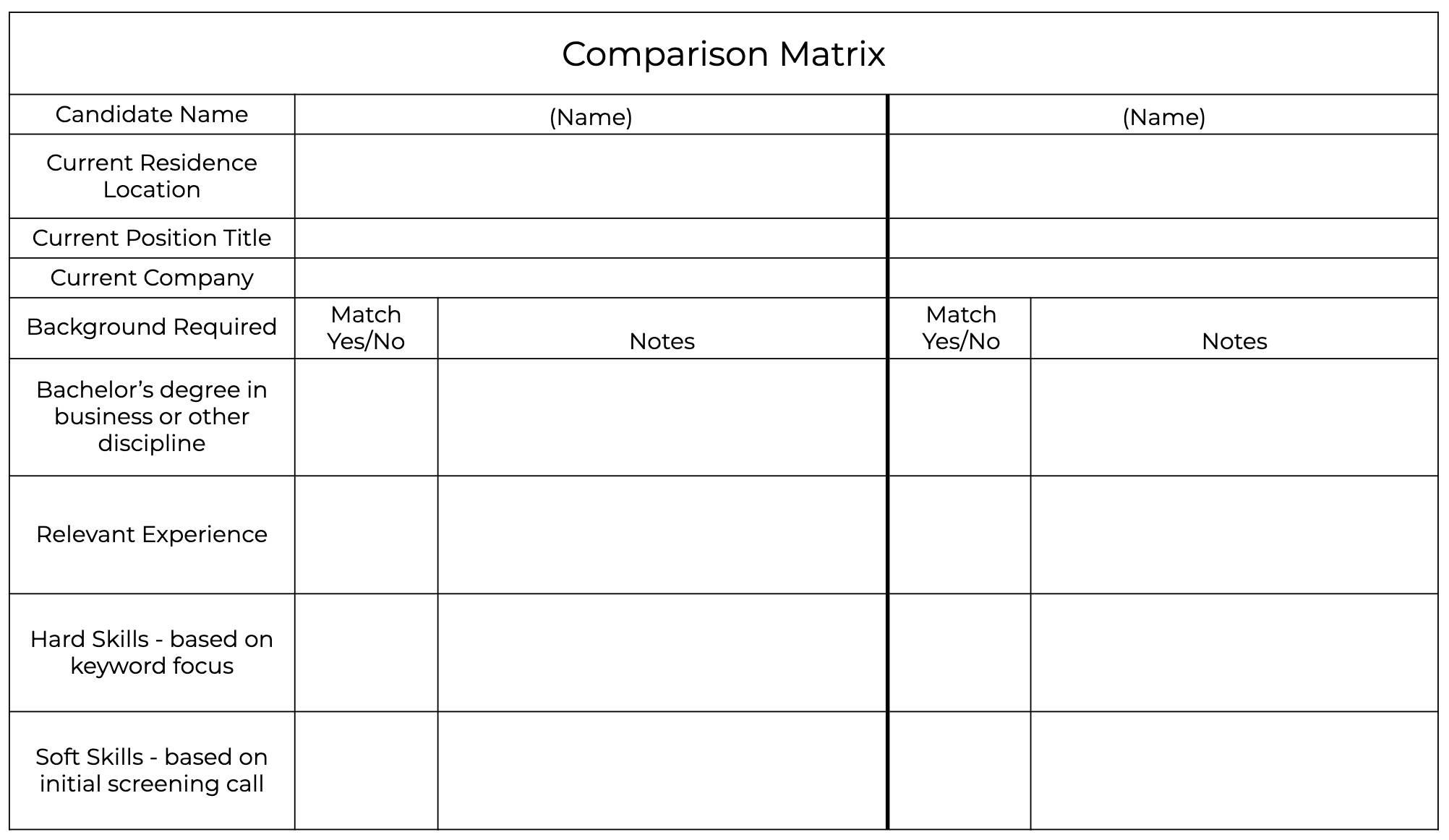What to Look for When Reviewing Resumes (5 Tips for Hiring Authorities and Executives)
Here are some quick tips to help you make sure you minimize the chance of missing that hidden gem.
1. Create an environment to concentrate and review documents
Determine what to use, will it be online or comparing printed documents? Some people still prefer that old-school method or they are receiving resumes en masse without any filtering or CRM assistance.
2. Separate the Qualified from the Unqualified quickly
Do they meet the basic requirements? Relevant Skills, Experience, industry knowledge, and education. Keywords are another useful way to help you.
3. Look for the Puffery and these Red Flags:
Less than 2 years in any position - get ready to ask the reason if you decide to interview them.
Puffing - when a candidate has 8 or 9 accomplishments that they cite, this could be a sign that they are taking credit for things that happened within the company organically versus projects they actually led, directed, and saw through to completion.
Attention to Detail - look for careless mistakes in spelling, grammar, and punctuation.
Gaps in the Resume - sometimes there is a valid reason, leave of absence to care for a parent, leaving to raise a family, etc…If a resume does not have Month, Year to Month, or Year the candidate could be hiding a gap space. If they say they cannot remember the month and year that highlights another red flag.
4. Create a Checklist or Comparison Worksheet | Matrix
Once you’ve completed an initial screening of the candidates an easy way to focus the mind and compare potential candidates is to create a comparison of relevant screened candidates by putting the job requirements in a left column and listing the candidates across. Most CRM or ATS systems are programmed to provide a compare resume feature. If you don’t have this available in your system or the ability to do it on screen then nothing focuses the mind like a simple checklist to compare finalists and get them in order.
Here is an example of a simple format to use if your ATS does not have one:
5. Be detailed and focused but not too rigid.
Resumes tell a story and occasionally a candidate comes along who is too busy to put a great resume together. The classic passive type of candidate is the hardest to reach, schedule, and maintain a connection with. My definition of a classic passive candidate is: “a candidate who is looking but too busy in their current role to put together a great resume.” They would rather let their results and their accomplishments speak for themselves. I have personally had experience with the passive candidate submitting a one-pager or even a LinkedIn profile resume to our firm. In my early years as a talent scout, I learned not to dismiss candidates early on if they did not have a sparkling resume. At first glance and on paper they may not look like a fit but ultimately they turned out to be the candidate that gets the role and will stay long term. Sometimes they will just hit a reply button and or send in a stock resume template or their LinkedIn profile because they are just too busy and dedicated to doing their current job versus finding a job.
It’s hard to find anyone that loves sifting through and reviewing a folder or pile of resumes. However, keeping an open mind and having a patient and systematic approach may help you uncover that next great candidate. Sometimes hidden gems are uncovered by being patient and not dismissing them early on.


